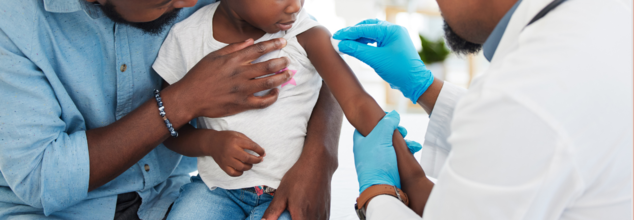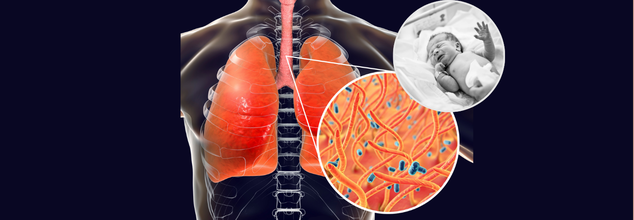
Not Puzzles, Shingles Vaccine Might Be Your Best Defense Against Dementia
Shingles, a painful viral infection due to the reactivation of the varicella-zoster virus (VZV), is primarily known for its blistering rash and nerve pain. New research indicates, however, that shingles vaccine can be significant in preventing dementia. This recent finding paves the way to new avenues to understand the association between viral illness and brain wellness, which might change preventive treatment against cognitive degeneration in aging individuals.
Once a person has had chickenpox, he or she carries the varicella-zoster virus for life. The virus lies dormant within nerve cells and may reappear years later as shingles, commonly because of compromised immunity with age, stress, or illness.
Shingles appears as a painful rash, typically on one side of the body, and may persist for weeks. Aside from the rash, the infection may cause severe complications like postherpetic neuralgia (PHN), a long-term nerve pain syndrome that lasts for months or even years. In rare instances, shingles may infect the eye, causing blindness.
The Centers for Disease Control and Prevention (CDC) estimates that approximately 1 in every 3 Americans will develop shingles at some time during their lifetime. Vaccines have been recommended to avoid the condition, but recent studies indicate they might also have an added bonus—prevention from dementia.
Shocking Link Between Shingles and Dementia
Dementia, such as Alzheimer's disease, is a rapidly increasing worldwide health issue, with millions of older adults at risk. Although the causes of dementia are still unknown, researchers have long suspected that some viruses, specifically those in the herpes family (which includes VZV), may play a role in cognitive decline.
A study recently published in Nature determined that getting the shingles shot lowered the risk of developing dementia dramatically. Scientists followed more than 280,000 elderly people in Wales who got the original shingles vaccine, Zostavax, and identified a 20% decrease in dementia incidence over the next seven years.
Lead author Dr. Pascal Geldsetzer of Stanford University said the results were "very robust" and added that women appeared to gain more benefit from the vaccine than men. Since women are at greater risk for dementia, these results could have important implications for future prevention efforts.
Can Shingles Cause Cognitive Decline?
Although no one knows the exact mechanisms, several theories discuss how the shingles virus might enhance the risk of dementia:
Inflammation and Brain Damage: The varicella-zoster virus has the ability to cause inflammation in the body, including the brain. Chronic inflammation is recognized to speed up cognitive decline and may play a role in neurodegenerative diseases such as Alzheimer's.
Vascular Effects: The virus has the ability to infect blood vessels in the brain, leading to clots or constricting blood flow. Decreased cerebral circulation is a well-documented risk factor for dementia and stroke.
Amyloid Protein Formation: A study by the University of Colorado Anschutz Medical Campus indicates that shingles can encourage the formation of amyloid plaques, a characteristic of Alzheimer's disease. These adhesive proteins clump together in the brain, interfering with normal function and speeding up cognitive decline.
Can Shingles Vaccination Protect Against Dementia?
The research suggests that shingles vaccination can lower the risk of dementia by inhibiting reactivation of the virus and triggering inflammation in the brain. It is unclear, however, whether the same protective mechanism works for the newer, more effective Shingrix vaccine, which supplanted Zostavax in 2020.
In contrast to Zostavax, which had a live but attenuated form of the virus, Shingrix is a genetically modified vaccine that consists of certain viral proteins to stimulate an immune response. Shingrix has been 97% effective in preventing shingles in clinical trials, versus 51% for Zostavax. Whether it can help prevent dementia, however, is an open question scientists are eager to investigate.
Who Should Receive the Shingles Vaccine?
The CDC advises Shingrix for people aged 50 and above, as well as younger adults with compromised immune systems. The vaccine is given in two doses, spaced a few months apart, and is very effective in preventing shingles and its complications.
With these advantages, however, vaccine acceptance continues to be low, with less than 40% of eligible Americans having gotten their shots. The most frequent side effects are mild flu-like symptoms and pain at the site of injection, but experts point out that the advantages far outweigh the risks.
Tips for Reducing Dementia Risk
Although shingles vaccination holds great potential for dementia prevention, it is not the only answer. Experts suggest an integrated approach to brain health that involves:
Living an Active Lifestyle: Physical exercise on a regular basis enhances circulation to the brain and averts cognitive loss.
Healthy Nutrition: A diet modelled on Mediterranean cuisine, featuring high intakes of fruits, vegetables, whole grains, and healthy fats, is supportive of brain function.
Social and Mental Stimulation: Mental activity with reading, puzzles, or social engagement may build cognitive reserve.
Control of Chronic Illnesses: Control of high blood pressure, diabetes, and cholesterol lowers the risk of dementia.
The association of shingles with dementia risk demonstrates the complex ways infectious illnesses affect overall well-being. Finding that shingles vaccination can decrease risk of dementia adds yet another persuasive argument to convince older people to be vaccinated. Although more study is necessary to validate the results, the study holds out hope that a straightforward vaccine has a key part to play in maintaining cognitive capacity and enhancing the quality of life among aging groups.
As scientists continue to investigate the link between viral infections and brain health, one thing is certain: guarding yourself against shingles might have advantages that reach far beyond the skin. With the increasing global burden of dementia, interventions such as vaccination could become a key part of the arsenal in the battle against cognitive decline.

Image Credit: Canva
One Million Children Could Die If US Cuts Vaccine Funding, Fuelling Another Health Crisis
As global health leaders warn of a looming immunisation disaster, the world watches America’s next move with urgency and concern. The world is facing a potential public health catastrophe as the United States mulls over pulling its financial support from Gavi, the Vaccine Alliance. According to a report by the BBC, such a decision could lead to the deaths of over one million children from preventable diseases, putting decades of immunisation progress at risk.
This stark warning comes from Dr Sania Nishtar, the head of Gavi, who has called the prospective funding cut a “disastrous impact on global health security.” The urgency stems from a New York Times report that the Trump administration is considering terminating its financial support for Gavi, despite the US being its third-largest donor. The consequences could be dire — not just for vulnerable children, but for global health systems at large.
Founded in 2000, Gavi plays a pivotal role in delivering vaccines to low-income countries, saving millions of lives by protecting children against diseases such as measles, tuberculosis, pneumonia, and polio. The alliance is known for its operational efficiency — with 97 cents of every dollar raised going directly to immunisation programs.
As of now, the US has pledged $1.6 billion for the 2026-2030 period, which accounts for 15% of Gavi’s total funding. However, immediate funding for 2025 remains uncertain. Dr Nishtar confirmed that Gavi is actively engaging with both the White House and Congress to secure a crucial $300 million allocation to maintain operations.
The current administration’s ‘America First’ policy has created new roadblocks for foreign aid, pushing organisations like Gavi into limbo. The US Agency for International Development (USAID) was among the first to face budget constraints under the Department of Government Efficiency (Doge), spearheaded by Elon Musk. A 90-day freeze on all US foreign aid was enforced earlier this year, raising fresh concerns about the future of global health funding.
Is a Immunisation Deficit Looming?
Of the 500 million children worldwide who are in need of vaccines, 75 million could be left without immunisation if Gavi loses American support. Dr Nishtar underscores the potential toll, saying this would mean “unnecessary deaths from diseases we can prevent — diseases we have vaccines for.”
Diseases like measles and polio, once nearly eradicated in several regions, could make a devastating comeback, especially in fragile health systems already overburdened by climate shocks, conflict, and post-pandemic recovery. The domino effect doesn’t end with childhood immunisations — critical emergency vaccine stockpiles for outbreaks of Ebola, cholera, and mpox could also be severely depleted.
Global health leaders have responded swiftly and vocally. Médecins Sans Frontières (MSF) warned that the US’s potential decision would be “catastrophic.” Carrie Teicher, MSF’s chief programs officer, stated that lives would be lost due to “a political decision with deadly real-world consequences.”
The Africa Centres for Disease Control and Prevention (Africa CDC) has also weighed in. Dr Ngongo Ngashi, emergencies incident manager at Africa CDC, noted that while African nations are prioritising routine vaccinations, “vaccines for emergencies are equally critical.” His team is currently in discussions with US officials, advocating for continued partnership.
Dr Ngashi further stressed the importance of regional self-reliance, urging African nations to establish independent funding streams not reliant on the “whims of external partners.” “We must take charge of our own public health future,” he said — a sentiment echoed by other health organisations now seeking sustainability beyond traditional Western funding.
In the wake of growing uncertainty, Gavi is proactively broadening its donor base. One of the most promising developments is Indonesia — once a recipient of Gavi support — stepping up as a contributor in 2024. This shift represents a paradigm change in how global health partnerships are being reshaped to ensure longevity and equity.
However, Dr Nishtar cautions that even with new partners, losing the US as a major donor would be a “massive blow.” The scale and immediacy of immunisation needs globally require the participation of established powers like the US.
The current political landscape in Washington remains tense, with advocacy groups pushing back against proposed aid cuts. Yet, the decision on Gavi’s funding will not only reflect America’s stance on foreign aid but will also reveal its commitment to global public health.
For now, the lives of one million children hang in the balance — children who may never reach their fifth birthday simply because the world’s most powerful nation decided to look inward. As the conversation continues on Capitol Hill, one thing remains clear: the next pandemic may not begin with a virus, but with a policy decision that lets known killers resurface.
Why the World Can’t Afford Cuts in Vaccine Funding?
The potential withdrawal of US funding from Gavi isn’t just a budgetary decision—it’s a moral crossroads. With millions of lives, particularly children’s, hanging in the balance, turning away now would mean reversing decades of progress in global health. In an era where viruses cross borders faster than ever, global vaccination isn’t just charity—it’s common sense. America’s leadership in public health has long been a pillar of international stability. The world is watching, and the consequences of inaction will be borne by the most vulnerable. It’s time for responsibility, not retreat.

Whooping Cough Kills Two Infants In Louisiana As Vaccination Rates Drop
Whooping cough is making an alarming comeback in the United States, with cases spiking to their highest level in over a decade. As of mid-December, preliminary data from the US Centers for Disease Control and Prevention (CDC) reveals more than 32,000 cases of pertussis reported nationwide—nearly six times higher than the same period last year. The outbreak is causing alarm among health authorities as the highly contagious bacterial disease, once largely subdued by vaccination, returns with vigor.
Often mistaken in its early phases for a common cold, whooping cough may progress to bout after bout of violent coughing that induces vomiting, broken ribs, and an iconic gasping "whoop" for air. The illness can persist for weeks or even months, and sometimes individuals unknowingly spread it. With rising transmission and infants being particularly susceptible, the surge is also triggering new concerns about vaccine resistance and routine immunization coverage gaps.
Two infants in Louisiana have died of pertussis—also known as whooping cough—making it the first such deaths in the state since 2018. These fatalities are part of an overall national increase in cases of pertussis, triggering fresh alarm among pediatric professionals and public health officials about declining rates of vaccination and waning immunity.
Pertussis is a highly infectious respiratory infection caused by the Bordetella pertussis bacterium. It is identified by persistent fits of coughing that usually culminate in a characteristic "whooping" sound as the patient struggles to catch his or her breath. Though the disease infects individuals of all ages, it is particularly hazardous for babies too young to be vaccinated.
For babies, it's actually pretty scary," CNN quoted Dr. John Schieffelin, Associate Professor of Pediatrics at Tulane University.
“They’re just coughing so much, they can’t eat, they can’t drink, and they often get pneumonia, which means we have to put them on a ventilator… they just never stop coughing.” With two decades of experience in pediatric infectious diseases, Dr. Schieffelin asserts that no other illness compares to the suffering pertussis causes in the youngest patients. Surging Numbers: The Return of a Supposedly Controlled Disease
Louisiana reported 110 cases of pertussis through the first quarter of 2025 alone, almost reaching the total 154 cases for the entire year 2024. National trends have an even more ominous course. In 2024, the United States had more than 35,000 cases of pertussis—its highest rate in more than a decade—that resulted in 10 deaths, six of whom were infants younger than one year.
This year, 2025, is looking to be even worse, with already 6,600 cases reported—almost four times the number reported at this time last year.
The United States previously reported over 200,000 cases of whooping cough per year prior to the availability of the pertussis vaccine. As the DTaP vaccine (diphtheria, tetanus, acellular pertussis) became widespread during the late 1940s, illness plummeted. Pertussis started seeping back into the United States in the 1980s due to enhanced surveillance and declining vaccine-induced immunity.
The CDC advises a five-dose series of the DTaP vaccine in children, starting at two months of age and continuing up to age six. Teenagers should have a booster (Tdap) between ages 11 and 12, and adults are encouraged to receive a Tdap booster every 10 years.
For newborns too young to be vaccinated, maternal immunization during the third trimester of pregnancy is crucial. This practice offers passive immunity to the infant, avertinh 78% of cases and decreasing the hazard of hospitalization by 91%, states the CDC. A second protective method is "cocooning," in which all members of the household are vaccinated to protect the infant from transmission.
The increase in cases of pertussis has come at the same time as a troubling drop in childhood vaccination coverage. The rate of US kindergartners vaccinated with the DTaP series has fallen steadily over the last five years, leaving thousands at risk.
In Louisiana, where the latest infant deaths occurred, access to healthcare is another pressing challenge. “Especially in a state like Louisiana, we’ve got a lot of poverty. We’ve got a lot of rural populations, and not everyone has access to regular medical care,” said Dr. Jennifer Herricks, founder of the nonprofit Louisiana Families for Vaccines.
Dr. Herricks and other health advocates contend that such systemic obstacles, combined with increasing vaccine reluctance, render state efforts to encourage immunization all the more vital. But in a contentious decision, the Louisiana Department of Health recently stated it would no longer encourage mass vaccination at community events and health fairs.
In a memo, Louisiana Surgeon General Dr. Ralph Abraham made clear that although the state still supports routine childhood immunizations, it will no longer encourage seasonal vaccines like COVID-19 and flu at mass clinics. But some local health officials are concerned this change in approach sends a confusing message.
"When you cast dispersions or make a question regarding the safety and effectiveness of a single vaccine, I think that it actually ends up having this ripple effect across all vaccines," said Dr. Jennifer Avegno, Health Department Director for New Orleans. Although she lauded the recent messaging by the Department of Health regarding pertussis, she wondered if outreach was sufficient. "It's perhaps too little, too late."
While the country grapples with this comeback, experts emphasize that vaccination is the best means to avoid pertussis outbreaks and save lives—particularly among the most vulnerable. Beyond early childhood immunizations, adult booster doses and maternal vaccination during pregnancy are key measures.
Dr. Schieffelin stresses the importance of communities coming together to work toward the protection of infants. "We have to think not just about ourselves, but about the people around us—particularly babies who can't yet get vaccinated. That's what community immunity is all about."
With over 6,000 cases already this year and numbers rising, the stakes are high. Public health officials, parents, and policymakers all must move quickly to rebuild trust in vaccines, increase access to care, and protect future generations from this preventable and fatal disease.

Credit: Canva
Women Are Overmedicated Due To Male-Dominated Drug Trials: Study
Women are frequently overmedicated, which leads to an increased risk of adverse side effects, a recent study conducted by scientists from the University of Chicago and the University of California discovered. This discrepancy arises because drug dosages are typically based on trials conducted predominantly on male subjects. "Drugs are optimized from the beginning to work on male bodies," explained Professor Brian Prendergast, a psychologist at the University of Chicago and co-author of the study. He also added that there was a need to immediately reevaluate the widespread practice of prescribing the same doses to men and women.
Side-Effects Range From Nausea To Seizures
It has long been recognized by scientists and medical professionals that women experience more side effects from medications than men, even when doses are adjusted for body weight. These side effects can range from mild symptoms such as headaches and nausea to more severe reactions like bleeding and seizures. Historically, women were excluded from clinical drug trials due to the mistaken belief that hormonal fluctuations would distort test results.
'Biomedical Science Is Done On Men, By Men'
"For much of the time it’s been practiced, biomedical science has been done by men, on men," said Prendergast. "It even starts in the petri dish: Most cell lines used in early tests are male, and then drugs are tested on male lab animals."It is pertinent to note that since 1993, the National Institutes of Health has mandated the inclusion of both men and women in clinical trials, with stricter enforcement following a pivotal 2014 study co-authored by Prendergast. That study demonstrated that hormonal cycles in female mice did not interfere with drug testing outcomes.
Despite these regulations, women remain underrepresented in many drug trials, and studies that do include them often fail to analyze or publish sex-specific data. Moreover, numerous medications approved before the 1993 mandate remain in use without adjustments for sex-based differences in drug metabolism.
Study Identifies 86 Drugs With Sex Difference
The study was published on June 5 in the journal Biology of Sex Differences. For the trials, Prendergast and co-author Irving Zucker of UC Berkeley analyzed publicly available data from clinical drug studies. They identified 86 drugs that exhibited clear sex differences in metabolism. The findings revealed that women metabolize nearly all these drugs more slowly than men, resulting in prolonged exposure and, in 96% of cases, significantly higher rates of adverse side effects.
The medications examined include widely used drugs such as aspirin, morphine, and heparin, along with common antidepressants like sertraline and bupropion.
While every individual metabolizes medications differently, women generally retain drugs in their bloodstream and tissues longer than men. The liver and kidneys also process drugs at varying rates between sexes, an effect that persists even when dosage is adjusted for body weight.
“The reasons for these big differences are not fully understood, but this is a really striking result and a wake-up call,” Prendergast stated.
Study Proposes Several Recommendations
To address this issue, the study’s authors propose several recommendations. They advocate for the FDA to disclose the gender composition of study participants in clinical trial data, label drugs known to have sex-based metabolic differences, and ensure that this information is integrated into medical education.
"There are a lot of drugs that are prescribed on a ‘one-size-fits-all’ basis, and it’s clear that this doesn’t always work," Prendergast emphasized. "Especially for drugs that we already know have a wide therapeutic range—meaning a broad range of doses can be effective—we could do a much better job of adjusting dosages based on sex."
This approach would involve starting women on lower doses and gradually increasing the amount until achieving optimal efficacy with minimal side effects. "We have an opportunity to do this better," Prendergast concluded. "This information needs to be widely available."
© 2024 Bennett, Coleman & Company Limited

